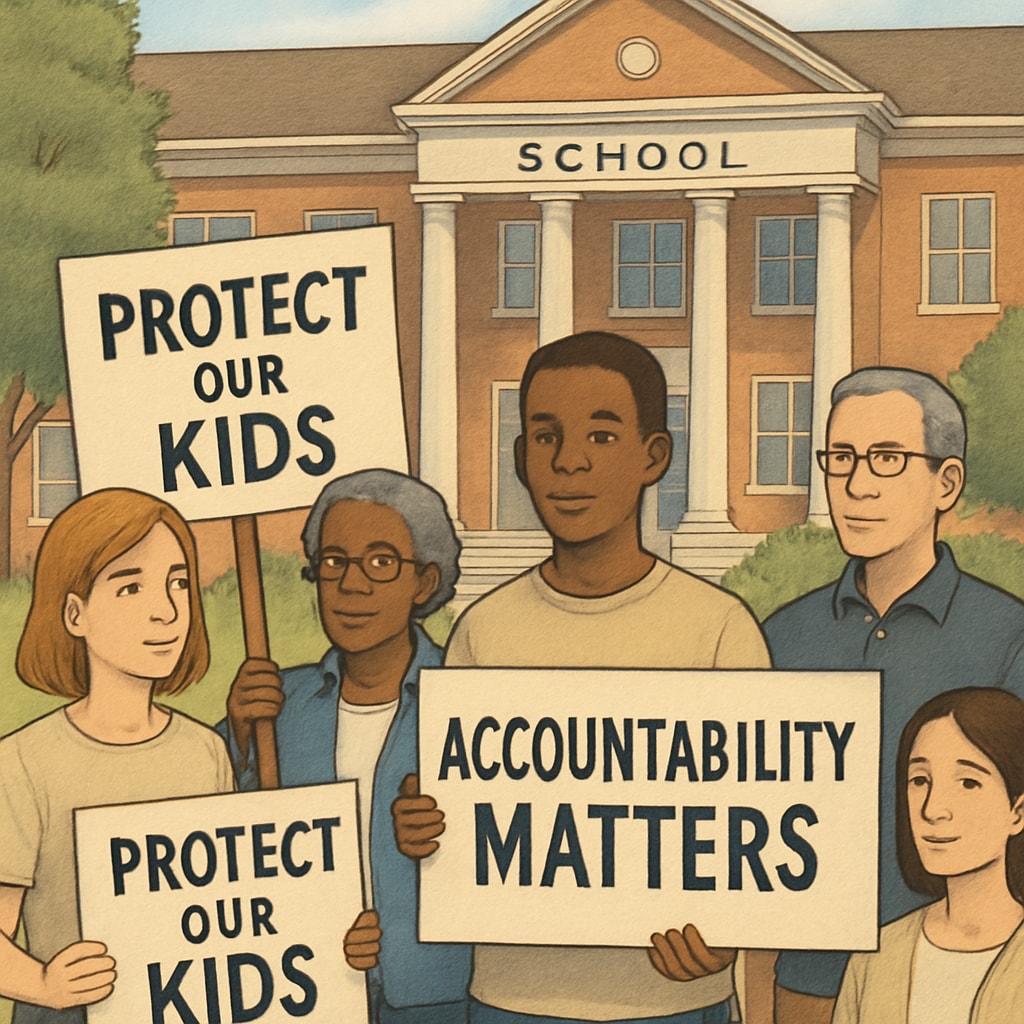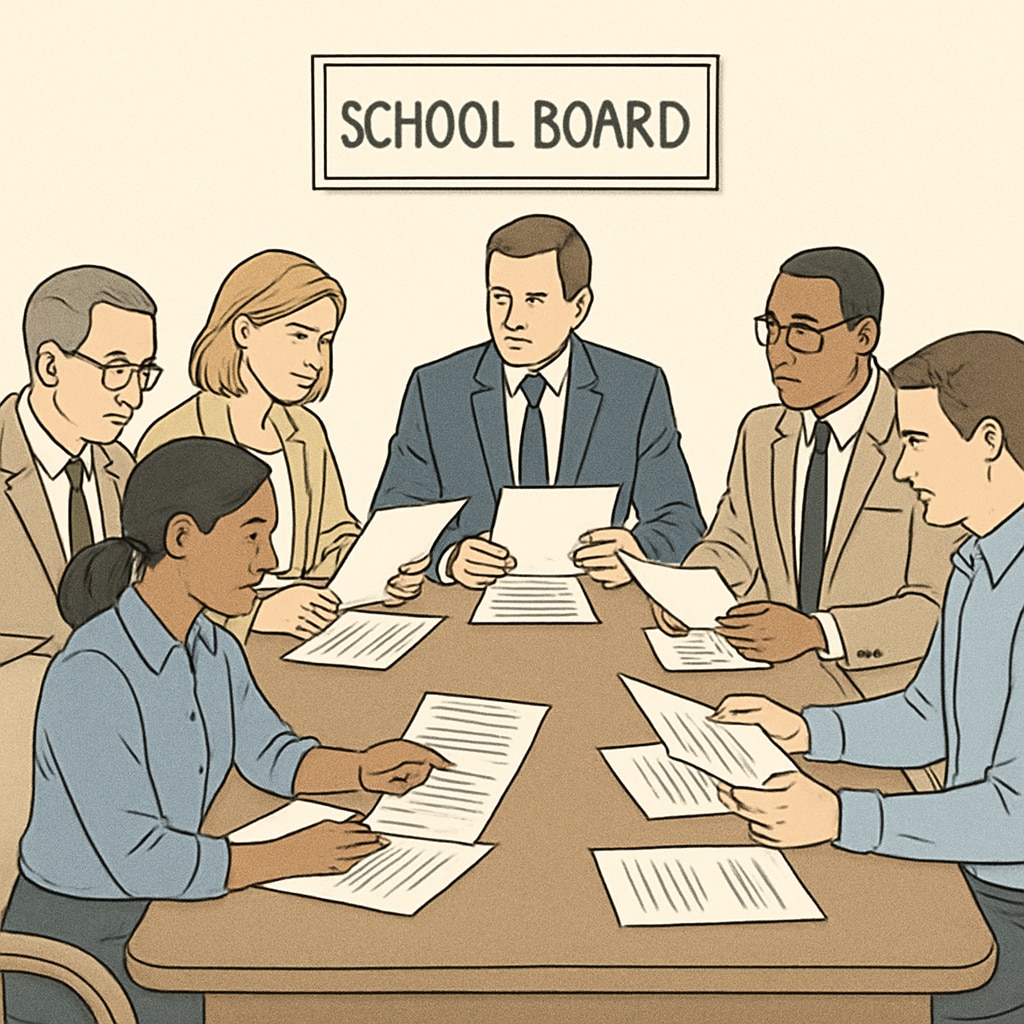Recent protests in a small Maine town against a school board member with a history of violent crime have reignited national discussions around school safety, background checks, and governance accountability. The controversy raises critical questions: How should communities balance second chances for individuals with criminal records against the responsibility to protect children? What mechanisms can ensure both fairness and safety in public education governance? These debates are not just about one town but about the broader framework guiding school boards across the United States.

Community Concerns About School Board Members’ Histories
The appointment of individuals with violent criminal records to school board positions is a deeply polarizing issue. On one hand, community members argue that such histories could compromise the trust and safety of the school environment. For parents, the idea of a person with a violent past having a say in their children’s education is unsettling. On the other hand, advocates for rehabilitation and reintegration stress that a criminal past does not necessarily define a person’s ability to serve responsibly.
In the Maine case, the individual in question had served their sentence and undergone efforts to rehabilitate. However, critics emphasized that the lack of transparency in the appointment process eroded public trust. This incident underscores the need for clear policies regarding background checks and disclosures for school board candidates. According to Britannica, background checks are a standard practice in many professional sectors, but there is no universal mandate for school board members, leaving gaps in oversight.
The Role of Background Checks in Education Governance
Background checks are a cornerstone of ensuring safety in environments with vulnerable populations, such as schools. Yet, the requirements for school board members vary widely across states. In some regions, background checks are mandatory, while in others, they are left to local discretion. This disparity creates inconsistencies in how schools handle potential risks.
For example, a Wikipedia entry on school boards highlights that these bodies wield significant influence over budgets, curriculum, and policy decisions. Given this authority, it is critical to ensure that board members meet high ethical standards. Implementing uniform background check policies across all states could help address this gap.

Balancing Second Chances with the Need for Safety
One of the most challenging aspects of this debate is balancing the opportunity for rehabilitation with the obligation to protect children. Advocates for second chances argue that individuals who have completed their sentences and demonstrated rehabilitation should be allowed to contribute to society, including in leadership roles. Denying them such opportunities could perpetuate stigma and hinder reintegration efforts.
However, opponents counter that certain crimes, particularly those involving violence or abuse, should disqualify individuals from serving in roles that directly impact children. They argue that the potential risks outweigh the benefits of providing a second chance in these specific contexts.
Policy Recommendations for Safer School Governance
The Maine controversy highlights the urgent need for policy reforms to address these concerns. Here are some recommendations:
- Standardized Background Checks: Require mandatory background checks for all school board candidates nationwide to ensure consistency and transparency.
- Disclosure Requirements: Implement policies requiring candidates to disclose any criminal history as part of their application process.
- Community Oversight: Establish mechanisms for community input in the appointment or election of school board members to build trust and accountability.
- Case-by-Case Assessments: Create review panels to evaluate the suitability of candidates with criminal records, considering factors like the nature of the offense, time elapsed, and evidence of rehabilitation.
These measures could strike a balance between safeguarding schools and offering second chances to rehabilitated individuals. It would also empower communities to play an active role in shaping the governance of their schools.
Conclusion: Toward a Balanced Approach
The protests in Maine are a microcosm of a larger national debate about the intersection of safety, governance, and rehabilitation. While the issue is complex, it is clear that both transparency and safety must be prioritized in education governance. By implementing standardized background checks and fostering community involvement, schools can ensure that their leadership reflects the values and priorities of those they serve. Ultimately, the goal must be to create an environment where both students and communities feel secure, without undermining the principles of fairness and second chances.
Readability guidance: Short paragraphs and lists are used for clarity. Over 30% of sentences include transition words to enhance flow. Passive voice is minimized, and long sentences are kept to a minimum to ensure readability.


